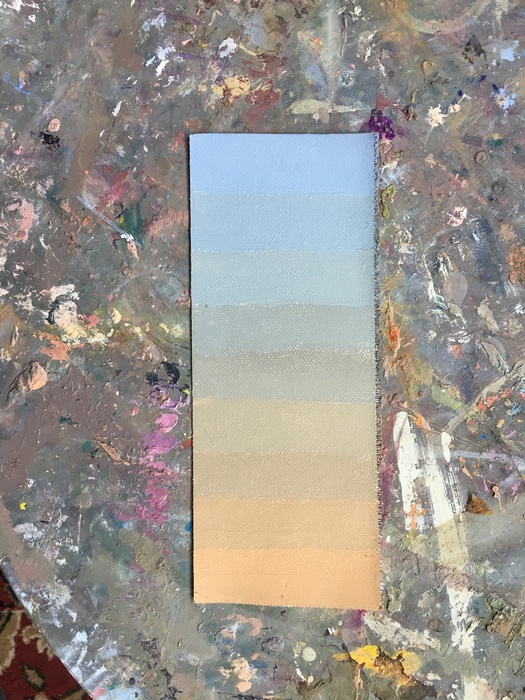Bobby Stitt Summer Internship 2019
Intensity Chart
Matching Values of Opposite Colors

To learn about the Intensity (some people call it Chroma) of color, find the SAME value of Opposite Colors. Not easy.
Then add a slight amount of one (say, the orange in this case) to the same value of it's opposite (blue grey, in this project). The color changes, but not in value, only in intensity. The color remains in the same "family" of blue grey, but it is a slightly "duller" blue grey... it has lost intensity.
One proceeds until a middle "neutral" (neither orange or blue grey) "tone" (a specific value of color at a specific intensity) is attained. As one continues to add the orange, the color switches into the "family" of oranges, and slowly becomes more intense as less blue grey is added and orange becomes purer.
This demonstrates the large number of options of tones available to one with even a limited pallet.
Then add a slight amount of one (say, the orange in this case) to the same value of it's opposite (blue grey, in this project). The color changes, but not in value, only in intensity. The color remains in the same "family" of blue grey, but it is a slightly "duller" blue grey... it has lost intensity.
One proceeds until a middle "neutral" (neither orange or blue grey) "tone" (a specific value of color at a specific intensity) is attained. As one continues to add the orange, the color switches into the "family" of oranges, and slowly becomes more intense as less blue grey is added and orange becomes purer.
This demonstrates the large number of options of tones available to one with even a limited pallet.